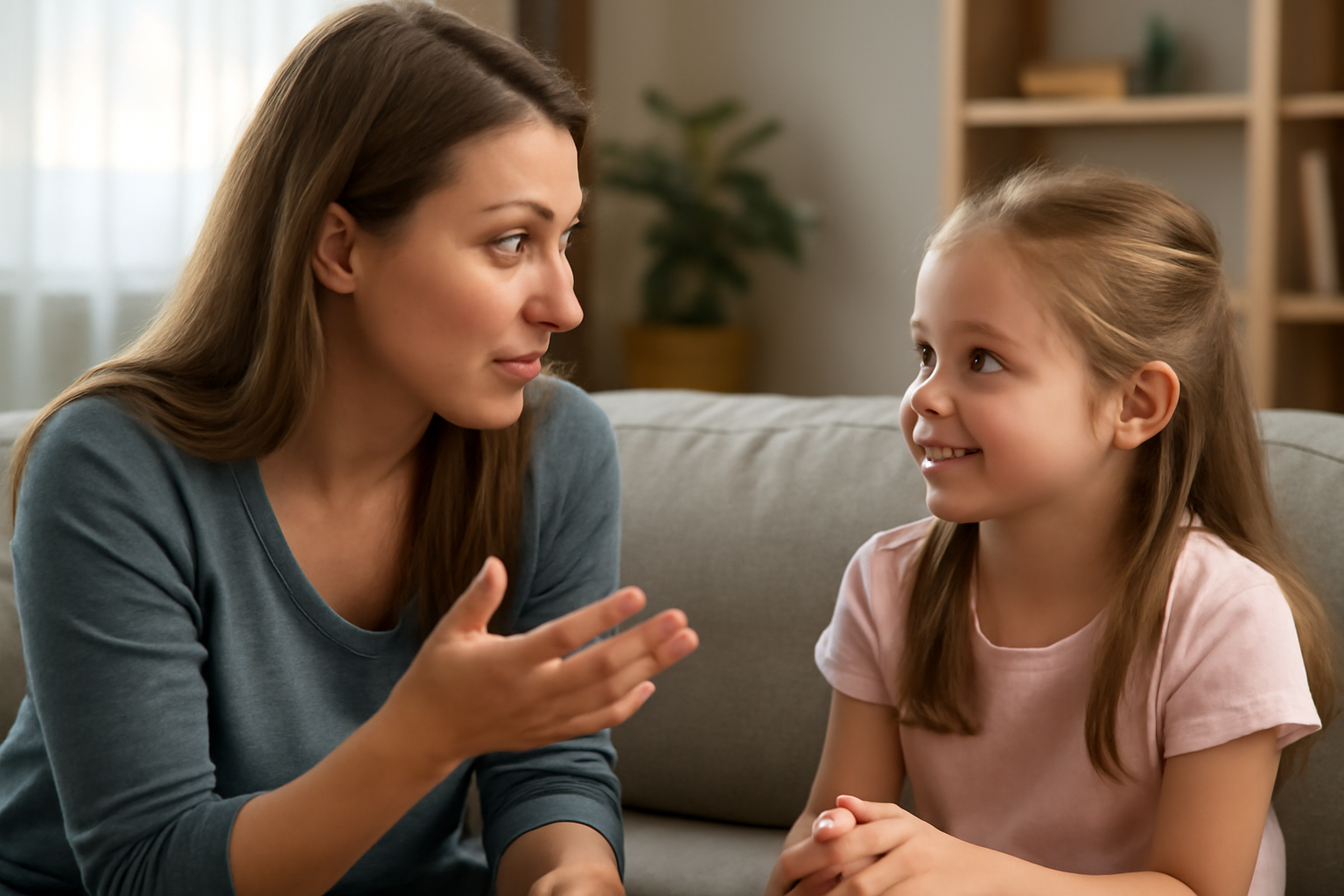Good communication is the foundation of a strong parent-child relationship. It helps children feel understood, valued, and supported. When kids know they can talk to you about anything—whether it’s exciting, scary, or confusing—they develop trust, confidence, and emotional security.
But communicating with children isn’t always easy. The way you connect with a toddler won’t be the same as with a teenager. The good news? With patience and the right strategies, you can create open, healthy conversations at every stage of your child’s life.
Here’s how to strengthen communication with your child from early childhood through adolescence.
Why Communication Matters
Strong communication helps children:
- Build emotional intelligence
- Feel safe expressing their feelings
- Develop problem-solving and social skills
- Strengthen family bonds
- Learn how to listen and respect others
It’s not just about talking—it’s about listening, connecting, and building trust.
Start with Active Listening
Listening is the first step to good communication. Show your child that what they say matters.
Tips:
- Put away your phone or distractions when they’re talking
- Make eye contact at their level
- Nod and repeat back key points (“So you felt upset when that happened?”)
- Don’t rush to give advice—just listen first
Children who feel truly heard are more likely to open up again.
Adapt to Their Age and Stage
Different ages call for different approaches:
- Toddlers and Preschoolers: Use simple words, ask yes/no questions, and use play as a way to talk.
- School-Aged Kids: Encourage storytelling, ask open-ended questions, and show genuine curiosity about their interests.
- Teenagers: Give them space to talk without judgment, respect their privacy, and listen more than you lecture.
Adjusting to their level helps keep the conversation flowing.
Create Daily Opportunities for Talk
Communication doesn’t have to be formal—it can be built into daily routines.
Try:
- Talking in the car or on walks
- Sharing highlights of the day at dinner
- Having bedtime chats before lights out
- Using playtime or shared hobbies to spark conversations
Regular small talks build a habit of openness.
Be Curious, Not Critical
When your child shares something, avoid immediate judgment or correction. Instead of:
- “Why would you do that?”
- “That was a bad choice.”
Try:
- “What made you decide to do that?”
- “How did you feel when that happened?”
- “What do you think you’ll do next time?”
This shows you value their perspective—even when you don’t agree.
Use Positive Body Language
Your non-verbal cues matter as much as your words. Smile, lean in, and keep your tone warm. Crossed arms, eye rolling, or sighing can shut down conversations before they start.
Teach by Example
Children learn communication by watching you. Model respectful dialogue at home:
- Listen to your partner or family members
- Say “please” and “thank you”
- Apologize when you’re wrong
- Handle disagreements calmly
The way you communicate with others sets the standard for your child.
Create a Judgment-Free Zone
Your child needs to know they can tell you anything without fear of punishment or ridicule. That doesn’t mean you ignore bad behavior—but you first listen with empathy, then discuss consequences calmly.
Say:
- “Thank you for being honest. Let’s figure this out together.”
- “I appreciate you telling me, even though it was hard.”
Trust grows when your child feels safe to share.
Ask Open-Ended Questions
Encourage deeper conversations by asking questions that invite more than yes/no answers:
- “What was the best part of your day?”
- “How did that make you feel?”
- “What do you think will happen if…?”
This helps your child reflect and express themselves more fully.
Respect Their Voice
As your child grows, let them be part of decisions when appropriate:
- Choosing meals or activities
- Discussing family rules together
- Asking their opinion before making changes
Respecting their input makes them feel valued and teaches responsibility.
Final Thought: Connection Before Correction
The heart of communication isn’t about fixing problems—it’s about building connection. When your child feels heard, respected, and loved, they’re more likely to listen to you in return.
By practicing active listening, creating open spaces for conversation, and showing empathy, you’re not just teaching your child how to communicate—you’re teaching them how to build healthy, lasting relationships.
And that’s a gift they’ll carry into every stage of life.
